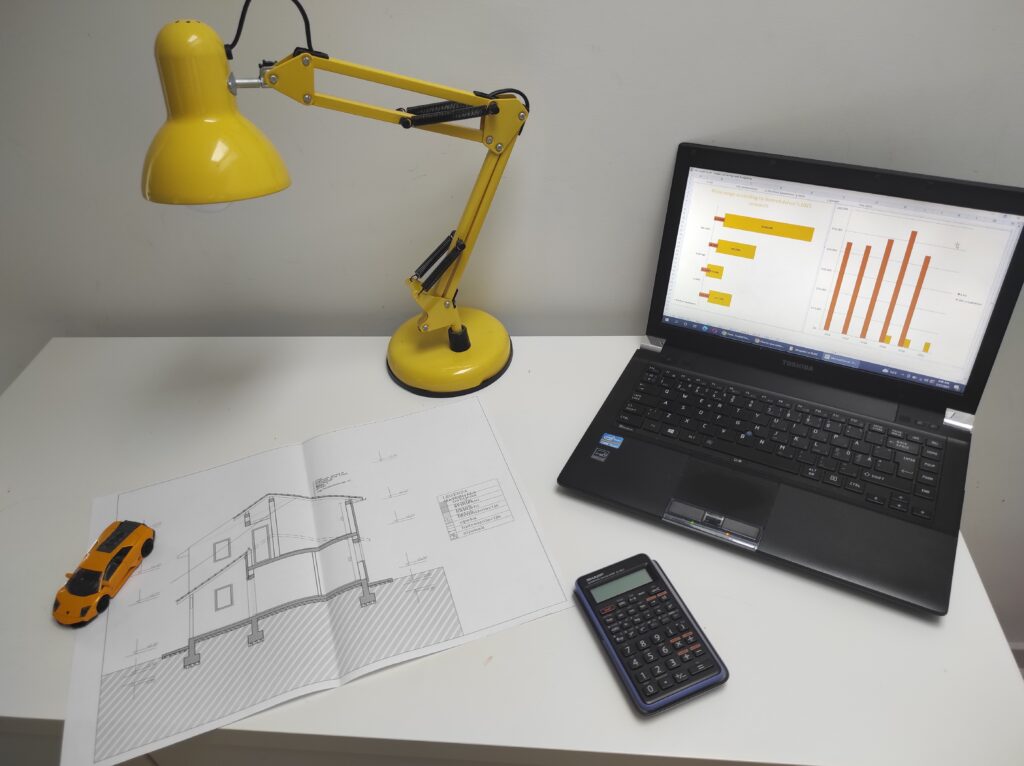
When do construction loan payments start?
Construction loan payments typically start once the construction phase begins. Unlike traditional mortgage loans, where the borrower receives the full loan amount upfront and makes payments based on that amount, construction loans are usually paid out in installments as the construction progresses.
During the construction phase, the borrower may make interest-only payments on the loan. These payments cover the interest that accrues on the outstanding balance of the loan, but do not reduce the principal amount. Once construction is complete, the borrower will begin making full principal and interest payments on the loan.
How construction loan draws work?
The draw process typically begins with the borrower submitting a draw request to the lender. The request will typically include documentation such as invoices, receipts, and progress reports that show completed work and spent money. The lender will review the request and may send an appraiser or inspector to verify the work completed before approving the draw.
Lenders determine draw schedules based on the expected timeline of the project and the amount of funds needed at each stage of construction. The draw schedule is usually outlined in the loan agreement and provides a roadmap for when funds will be disbursed. It’s important for borrowers to follow the draw schedule closely to ensure that they receive the necessary funds when they need them and to avoid any delays in construction.
One common issue borrowers face with when it comes to construction loan draws is underestimating the cost of the project or running into unexpected expenses. If the borrower requests more funds than in the loan agreement, the lender may require additional documentation or may even reject the draw request. This can cause delays in the project and add to the overall cost of the loan.
I know from personal experience that banks respond quite rigorously in such cases and rarely show understanding for an unforeseeable circumstances or flexibility in payment or contract terms.
Another issue borrowers may face is not properly documenting the work completed or not providing the necessary documentation with the draw request. This can result in delays or rejections of the draw request, which can also add to the overall cost of the loan.

Pre-Construction Phase
Before construction begins, there are several important steps to complete during the pre-construction phase. These steps can include:
- Project Planning and Design: This involves working with architects and engineers to design the project and create blueprints, drawings, and schematics for the construction phase.
- Permits and Approvals: Before construction can begin, the project must receive various approvals and permits from local, state, and federal agencies. This can include zoning permits, building permits, and environmental permits.
- Budgeting and Financing: You must establish the project budget and secure financing. This may involve securing a construction loan or other types of financing to cover the costs of the project.
- Site Preparation: This involves preparing the construction site for building, including clearing the land, grading, and laying the foundation.
Loan contingency requirements are conditions that are built into construction loan agreements to protect lenders and borrowers against unexpected events that may impact the project. These contingencies may include things like changes in interest rates, delays in construction, or unexpected cost overruns. The contingency requirements may vary depending on the lender and the specific loan agreement.
Construction Phase
During the construction phase, borrowers may be required to make interest-only payments on the loan. This means that the borrower only pays the interest that has accrued on the outstanding balance of the loan, rather than paying down the principal balance. Interest-only payments are typically made during the construction phase to help borrowers manage cash flow while construction is ongoing.
To make construction loan payments, borrowers will typically work with their lender to set up a payment schedule and payment method. Payments may be made directly to the lender, or borrowers may use an escrow account to manage their payments. Some lenders may offer online payment options or other convenient payment methods to help borrowers manage their loan payments. It’s important for borrowers to make payments on time to avoid any penalties or fees and to ensure that the construction project stays on track.

Post-Construction Phase
Once construction is complete, the borrower will typically schedule a final inspection with the local building authority to ensure that the construction meets all relevant building codes and regulations. This may involve a walkthrough of the property, checking for any defects or issues, and verifying that all required permits have been obtained.
If the property passes the final inspection, the lender will typically release the final installment of the loan funds to the borrower. This may also involve the lender reviewing any final construction documents and verifying that all work has been completed in accordance with the loan agreement.
After construction completion and passing the final inspection, borrowers will need to start making full principal and interest payments on their loan. Repayment options for construction loans may vary depending on the lender and the specific loan agreement. Some borrowers may choose to refinance their construction loan into a traditional mortgage loan once construction is complete, while others may choose to pay off the loan in full.
In some cases, lenders may offer repayment options that allow borrowers to make interest-only payments for a period of time after construction is complete. This can help borrowers manage their cash flow during the transition from construction to full repayment.
Overall, borrowers should work closely with their lender to understand their repayment options and develop a repayment strategy that meets their needs and financial goals.
